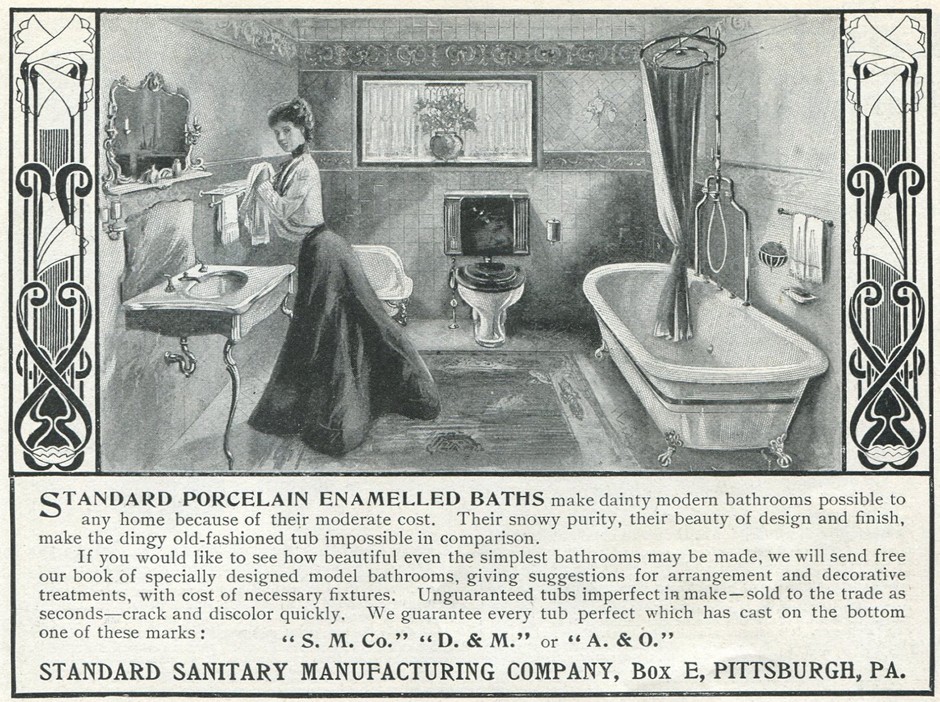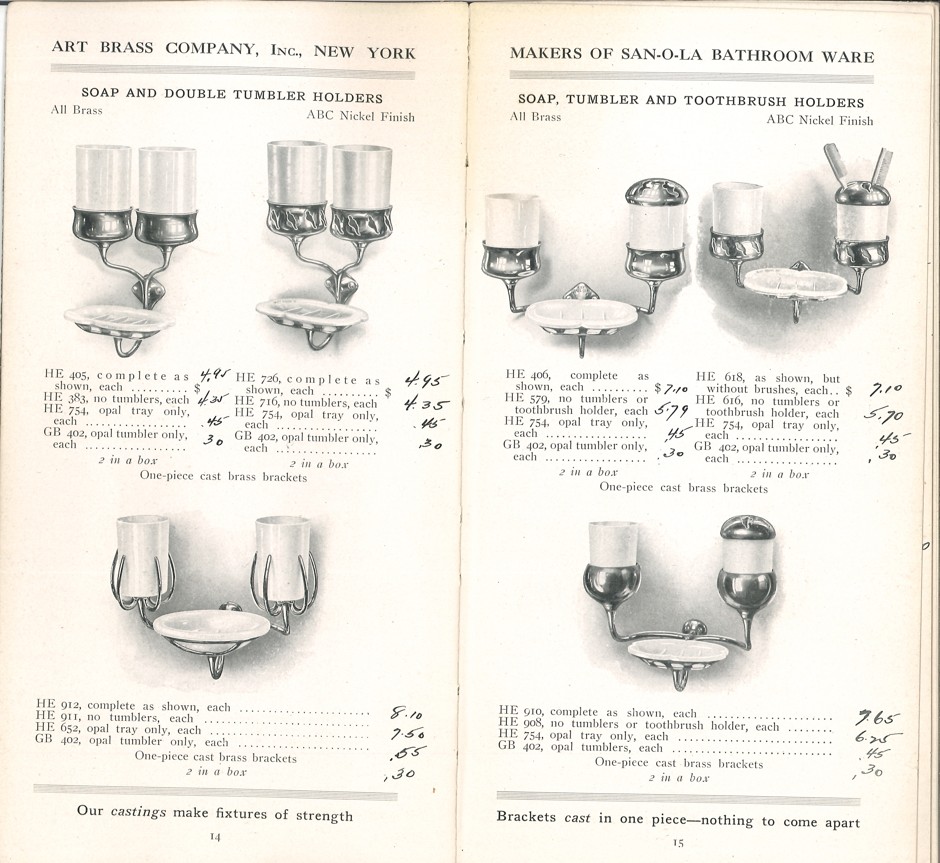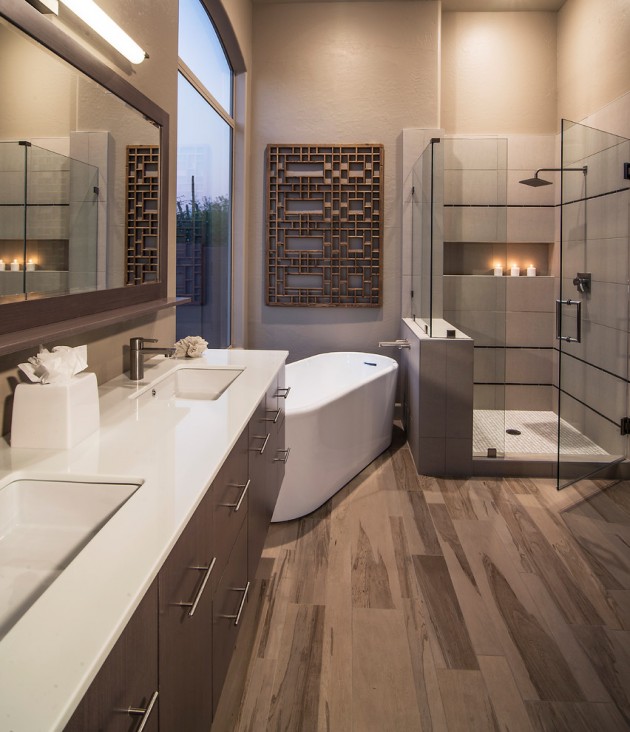| Healthcare provider confronting anti-lock down protesters time.com |
Welcome to a fresh week of the social distance edition of the blog, the potty post. Before we go, three cheers to all the healthcare providers who confronted anti-lock down protesters.
Anti-lock down protests began springing up last week, apparently supported by the president, conservative and libertarian leaning interest groups, targeting states in play in the 2020 General Elections with Democratic governors. The protesters claim that their rights are being violated by shelter-in-place orders. Really? No one is preventing anyone from ignoring shelter-in-place orders just like no one is preventing anyone from practicing social distancing, covering your nose and face when you go out, staying home when your sick, washing your hands, sneezing and coughing into your elbow. Now, then, who has to go potty?
| Victorian era bathroom brownstoner.com |
Historically, epidemics, like cholera and tuberculosis, have led to design and technological innovations. Modern sanitation systems is the perfect example of large-scale design and technological innovations that followed in the wake of cholera and yellow fever epidemics. Are bathrooms the next frontier?
Think about it for a second. We use the bathroom all the time, for assorted reasons, why not infectious disease prevention? If Lloyd Alter, former architect and design historian at the Ryerson School of Design, were building a new house he would add one unusual feature, a bathroom sink in the entry vestibule. Mr. Alter spoke to CityLab,
We're going to see a real resurgence of the vestibule, I think,... This is a transition zone from the outside to the inside, where you take off your dirty stuff and you wash your hands before you go into the house (citylab.com; Apr. 10, 2020; date accessed Apr. 20, 2020).
| Entry vestibule idea schlage.com |
Mr. Alter predicted that disease avoidance would come to the forefront of bathroom design a few years ago, following his observations of the traumatic effects of the 2003 SARS epidemic in Toronto (Ibid). Generally home design, particularly the bathroom, has long been influenced by infectious disease. This not a linear cause-and-effect, instead it is the result of "a convergence of advancements in science, infrastructure, plumbing, sanitation and design trends" (Ibid). The room in your house, where you do your best thinking, developed alongside tuberculosis, cholera, and influenza epidemics. The fittings, fixtures, wallcoverings, flooring, and finishes were used to promote good health and hygiene in the home during a period of increased public health concerns.
That was then, this is now, and now is COVID-19 which could put public health back as main home design issue, especially now that we wash our hands and scrub our nails down to a pulp. Thus, it is not that far-fetched to imagine someone, somewhere coming with a more efficient way to spend the necessary 20-seconds to properly clean you hands. Vestibule sinks are not a new idea. They used to be common sights in tenements, albeit, as a cost-saving measure once indoor plumbing became more common, not as a deliberate effort to get more people to wash their hands before entering their homes. Elizabeth Yuko, of CityLab, points this out as an example of how health concerns affected the way we live, something likely to happen in the post-COVID era and the bathroom will become the focal point.
 |
| 19th-century bathroom pinterest.com |
In the beginning: water treatment and wooden fixtures
By the late 19th-century, there were 136 public water supplies in the United States as well as an growing network of sanitation and sewer systems in urban areas across the nation.
This coincided with the acceptance of germ theory was catching on (slight pun) with the help of early public health campaigns and before the widespread use of antibiotics in the 1940s and 1950s. "Crowded conditions and poor water quality and sanitation made cities fertile grounds for a host of pathogens" (citylab.com; Apr. 10, 2020). At the time, only the affluent could afford indoor plumbing: "first in the form of a tap in the kitchen and later a small sink in the bedroom in place of their existing setup with a wash basin, says Alter" (Ibid). There was specifically dedicated bathroom, per se, owing to the common attitude that sewer gases (Ibid) spread disease, even the upper class urban dwellers preferred the chamber pot and outhouses until around the turn of the century.
| 19th-century commode sciencesource.com |
While chamber pots were still en vogue, those who could afford it stored them inside wooden commodes. Lloyd Alter explained,
So when the rich built their first bathrooms, they encased everything (citylab.com; Apr. 10, 2020)
The commodes--chair-like pieces of furniture that held the chamber pot that the household staff would be in charge of dumping out of the window--were made from ornately carved dark woods, similar to the sink, toilet, and bathtub to disguise their true purpose.
A focus on health and hygiene
The cover of a 1912 sales brochure from the Standard Sanitary Manufacturing Company (later American Standard) featured illustrations of American bathrooms going back to 1875. Elizabeth Yuko observes, " Though only 37 years had passed between the design of the two rooms, they are starkly different: the former covered in wood, and the latter not all that different from bathrooms as we know them today" (citylab.com; Apr. 10, 2020).
 |
| Illustration from the Standard Sanitary Manufacturing Company 1912 citylab.com |
The sales brochure read:
Ideas of sanitation and hygiene apparently unknown but a few short years ago have become so imbred [sic] in our daily lives,..., that were we for any reason compelled to forgo them, we would feel that we had retrogressed for centuries, instead of the only twenty-five to fifty years in which present day sanitation and hygiene have come into being (citylab.com; Apr. 10, 2020)
During the early 20th centurym medical professional realized, then convinced the general public, that indoor toilets connected to public sewer systems were exceedingly more beneficial to stopping the spread of infectious disease. As tuberculosis and influenza continued to randomly kill among the classes, bathroom design continued to evolve to help to the epidemics.
Wood was the first material to go, replaced with exposed plumb fixtures, much easier to clean and more sanitary. Bathtubs, originally made of zinc- or copper-lined, gave way to enamel-coated cast-iron, an innovation introduced by the Kohler Company in 1883 as a way to make their tubs and products superior, clean and hygienic, according to Angela Miller, the manager of archives and heritage at Kohler (citylab.com; Apr. 10, 2020). The enamel-based products were easy to clean and became the primary bathroom material for hospitals and private homes.
Bringing the hospital into the home
In the pre-antibiotics days, patients suffering from respiratory illnesses were prescribed rest, sunlight, and fresh air. This was the operational theory behind sanatoria where tuberculosis suffers were isolated and treated. Architectural historian Paul Overy's 2008 book Light, Air, and Openness, lays out how hospitals and santoria gave birth to many of features the modern design. "This also included all-white patient rooms, which, he writes"
were designed not only to be easy to clean but to appear to be spotlessly clean--potent visual symbol of hygiene and health (citylab.com; Apr. 10, 2020)
These principles were quickly adapted by homeowners, particularly in the kitchens and bathrooms. Gone was the visually cluttered wooden fixtures and furnishings of the Victorian era, deemed unhygienic and unsanitary. "Wooden floors were torn out in favor of tiles, or better yet, a relatively new material made from cotton scrim with oxidized linseed oil and cork dust called 'linoleum' (Ibid). "Lighter textiles like linen supplanted heavy drapery because they were not only easier to wash, but also let in more air and sunlight," according to design historian Alessandra Woods (Ibid). Ms. Woods told CityLab,
If you were putting up drapery, linen is something that's better to choose than the heavier textiles--so ventilation is key here too (Ibid)
Wallpaper found itself in the cross hairs of the late 19th century sanitary crusaders, according to Bo Sullivan. Mr. Sullivan, a historian specializing in American residential architecture and decor, 1870 to 1970 and founder/owner of Arcalus Period Design in Portland, Oregon. He points to the 1874 book Shadow from the Walls of Death. Lloyd Alter told CityLab that there was increasing attention paid to the unhealthiness of dirty and sometimes damp layers of wallpaper that was not intended to be cleaned (Ibid). He said,
White became all the rage because you wanted to reflect sunlight... because light was considered to be the best disinfectant (Ibid).
Kelly Wright, a professor of American history at the University of Cincinnati and specializing in the historic use of color in architecture, spoke to CityLab, "one of the reasons 19th century wallpaper was so heavily patterned was that flies were so prevalent in homes at the time: The busyness of the walls helped mask the flies and related stains" (Ibid). As sanitation became the norm, more washable white tiles and painted walls grew in popularity.
Bathroom fittings--eg. soap dishes and towel bars--were another crucial element of the ideal sterile appearance of the home bathroom/ Mr. Sullivan explained,
There was a 'laboratory'-type quality to early-20th-century bathrooms and kitchens... and nickle-plated brass bathroom fixtures play a large role in this,... (Ibid)
Like many common household products of the period, these fixtures were common sights in hospitals. The Art Brass Company of New York branded their products San-o-la (Ibid) as a way to cash in on the sanitary design trend. The San-o-la pieces were not only practical but also aesthetically pleasing, drawing the Art Nouveau to add a touch of glamour to an otherwise cold and sterile space.
Hygienic and the spread of infectious concerns propelled another home design innovation that we are all extremely grateful for (dramatic pause) a second bathroom. Elizabeth Yuko writes, "In multi-story homes, bathrooms were typically located on the second floor, near the bedrooms. But as influenza outbreaks raged in the early 20th century, some homeowners added a small half-bathroom--also known as a 'powder room'--on the ground floor of a house near the entrance" (citylab.com; Apr. 10, 2020). A genius move that allowed delivery people and guests an opportunity to wash their hands before moving into the more private spaces.
Disease and design
| Early 20th century pedestal sink and medicine cabinet oldhouseonline.com |
In the pre-antibiotics days, patients suffering from respiratory illnesses were prescribed rest, sunlight, and fresh air. This was the operational theory behind sanatoria where tuberculosis suffers were isolated and treated. Architectural historian Paul Overy's 2008 book Light, Air, and Openness, lays out how hospitals and santoria gave birth to many of features the modern design. "This also included all-white patient rooms, which, he writes"
were designed not only to be easy to clean but to appear to be spotlessly clean--potent visual symbol of hygiene and health (citylab.com; Apr. 10, 2020)
These principles were quickly adapted by homeowners, particularly in the kitchens and bathrooms. Gone was the visually cluttered wooden fixtures and furnishings of the Victorian era, deemed unhygienic and unsanitary. "Wooden floors were torn out in favor of tiles, or better yet, a relatively new material made from cotton scrim with oxidized linseed oil and cork dust called 'linoleum' (Ibid). "Lighter textiles like linen supplanted heavy drapery because they were not only easier to wash, but also let in more air and sunlight," according to design historian Alessandra Woods (Ibid). Ms. Woods told CityLab,
If you were putting up drapery, linen is something that's better to choose than the heavier textiles--so ventilation is key here too (Ibid)
Wallpaper found itself in the cross hairs of the late 19th century sanitary crusaders, according to Bo Sullivan. Mr. Sullivan, a historian specializing in American residential architecture and decor, 1870 to 1970 and founder/owner of Arcalus Period Design in Portland, Oregon. He points to the 1874 book Shadow from the Walls of Death. Lloyd Alter told CityLab that there was increasing attention paid to the unhealthiness of dirty and sometimes damp layers of wallpaper that was not intended to be cleaned (Ibid). He said,
White became all the rage because you wanted to reflect sunlight... because light was considered to be the best disinfectant (Ibid).
Kelly Wright, a professor of American history at the University of Cincinnati and specializing in the historic use of color in architecture, spoke to CityLab, "one of the reasons 19th century wallpaper was so heavily patterned was that flies were so prevalent in homes at the time: The busyness of the walls helped mask the flies and related stains" (Ibid). As sanitation became the norm, more washable white tiles and painted walls grew in popularity.
 |
| A page from the Art Brass Company catalog citylab.com |
Bathroom fittings--eg. soap dishes and towel bars--were another crucial element of the ideal sterile appearance of the home bathroom/ Mr. Sullivan explained,
There was a 'laboratory'-type quality to early-20th-century bathrooms and kitchens... and nickle-plated brass bathroom fixtures play a large role in this,... (Ibid)
Like many common household products of the period, these fixtures were common sights in hospitals. The Art Brass Company of New York branded their products San-o-la (Ibid) as a way to cash in on the sanitary design trend. The San-o-la pieces were not only practical but also aesthetically pleasing, drawing the Art Nouveau to add a touch of glamour to an otherwise cold and sterile space.
Hygienic and the spread of infectious concerns propelled another home design innovation that we are all extremely grateful for (dramatic pause) a second bathroom. Elizabeth Yuko writes, "In multi-story homes, bathrooms were typically located on the second floor, near the bedrooms. But as influenza outbreaks raged in the early 20th century, some homeowners added a small half-bathroom--also known as a 'powder room'--on the ground floor of a house near the entrance" (citylab.com; Apr. 10, 2020). A genius move that allowed delivery people and guests an opportunity to wash their hands before moving into the more private spaces.
| 1920s bathtub with green and lavender tile oldhouseonline.com |
Disease and design
When architects began to design home in the aftermath of the devastating 1918 flu pandemic and The First World War, they generally took one of two approaches to address both traumatic events. The first was ground up rethink of everything, like the strategy used by the Modernists and the Bauhaus. The second, far more common strategy, was the self-care strategy: put the recent traumas behind and make ourselves comfortable. The self-care strategy helped popularize Art Deco, according Dianne Pierce, adjunct professorial lecturer in decorative arts and design history at George Washing University (Ibid). In bathrooms, aside from easy to clean tiles and geometric fixtures, the style offered
cocooning and comfort and pleasure and sensuality,... I think the motivation is more sensual,... It's more about the thrill of being able to run hot water into a tub and have the comfort of a bath (oh goodness yes, Ibid)
Regardless of what style bathrooms of the interwar period were designed in, the point was ease of cleaning and as hygienic as possible. Once antibiotics became more common, bathroom design no longer needed to emphasize good sanitation and hygiene, allowing for other trends--like seventies era carpeted bathrooms with fuzzy toilet seat covers. (Ibid). This begs the question, how will bathrooms be designed in the post-COVID-19 era?
 |
| Chic contemporary bathroom architecturalartdesign.com |
Americans have already shown a very keen interest with this feature: "In the last 50 years, the number of home bathrooms per person has doubled" (citylab.com; Apr. 10, 2020). It is easy to imagine a bathroom building boom as future (or current) homeowners keep the possibility of self-isolation in mind. Another trend in bathroom design to keep an eye on is the bidet. There has been speculation that the fitting used to clean one's privates and posterior will be the rage as toilet-paper shortages encourage Americans to embrace this more sustainable alternative.
Once something that resembles normalcy returns, it will be fascinating to see how we respond to the virus-inflicted trauma either by comforting ourselves or by design innovations that make it easier to clean our bodies, or a combination of the two. Prof Pierce said,
It's the idea that we've been through this horrible trauma, and now we want to live in a way that is just comfortable (Ibid)
Starting with a nice, long, hot soak in a lavender scent tub.
No comments:
Post a Comment